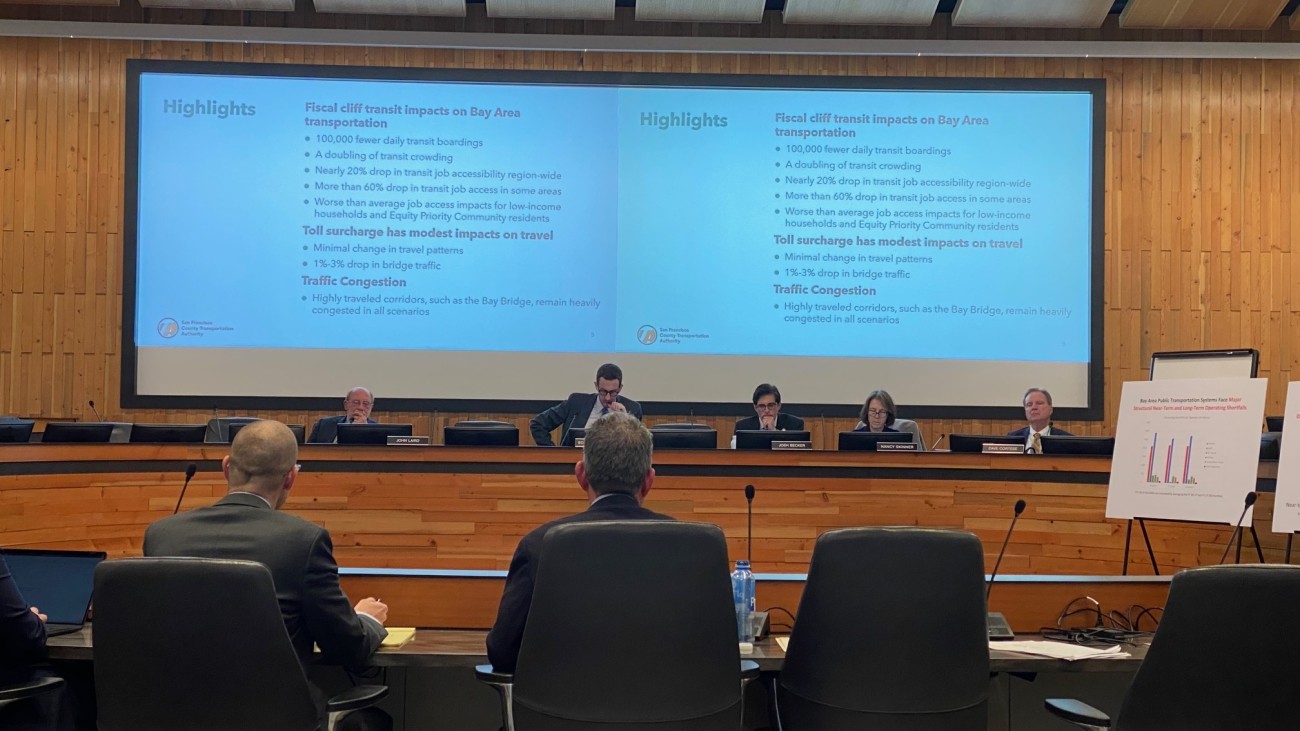
As Bay Area transit agencies face the possibility of upcoming budget shortfalls known as the fiscal cliff, the California Senate’s Select Committee on Bay Area Public Transportation- led by Chair Senator Scott Wiener - held a hearing on local and regional transit systems’ funding challenges and needed reforms.
At the November 27 hearing, the Transportation Authority’s Principal Modeler Dan Tischler presented an analysis of the transit fiscal cliff’s potential impacts on transit ridership, job accessibility, and traffic. Another scenario analyzed a temporary Bay Area bridges toll surcharge of $1.50.
We used the Transportation Authority’s 9-county SF-CHAMP activity-based travel demand model to investigate hypothetical situations about what could happen to the transportation landscape under various scenarios. This includes transit service cut scenarios, and the associated magnitude of impacts that would likely result if operating funds are not found to bolster Bay Area transit finances by 2026.
Transportation Authority model forecasts estimate that transit service cuts could lead to 100,000 fewer daily transit boardings, doubled transit crowding, and reduced job accessibility.
The most acute impacts of this scenario would be experienced by low income households and residents of Equity Priority Communities in the Bay Area who would be at risk of 25% lower transit job accessibility.
Of the agencies modeled, BART would be the most severely impacted by the fiscal cliff with a 50% drop in ridership resulting from potential service cuts. Rail operators like BART and Caltrain have high fixed costs, so a moderate budget shortfall could require large cuts to service. Almost half of those lost transit rides would likely become new driving trips, further spiking congestion. About 40% of transit trips could be lost entirely, with travelers foregoing the trip or choosing alternative destinations.
With the toll surcharge scenario, we see modest to minimal impacts on travel. In all scenarios, highly traveled corridors will remain heavily congested.
Transit executives who testified at the hearing included general managers from BART, Caltrain, Muni, AC Transit, Santa Clara Valley Transportation Authority, Golden Gate Bridge, Highway, and Transportation District, and Bay Ferry (Water Emergency Transportation Authority), among others. Agencies are engaged in improving and coordinating transit service, raising safety and cleanliness, as well as adding signage and wayfinding for their riders.
Committee members expressed the importance of public transportation to the Bay Area, and the need to take the fiscal cliff seriously, with many pledging to continue to work proactively and collaboratively to address it.